Circadian rhythms
What are circadian rhythms?
Circadian rhythms are the result of an adaptation to earth’s rotation applying a 24 hour structure on bodily physiology. Humans are diurnally active. The body with its physiology organized around 24 hours is optimally functioning when this rhythm is paced daily by light.¹
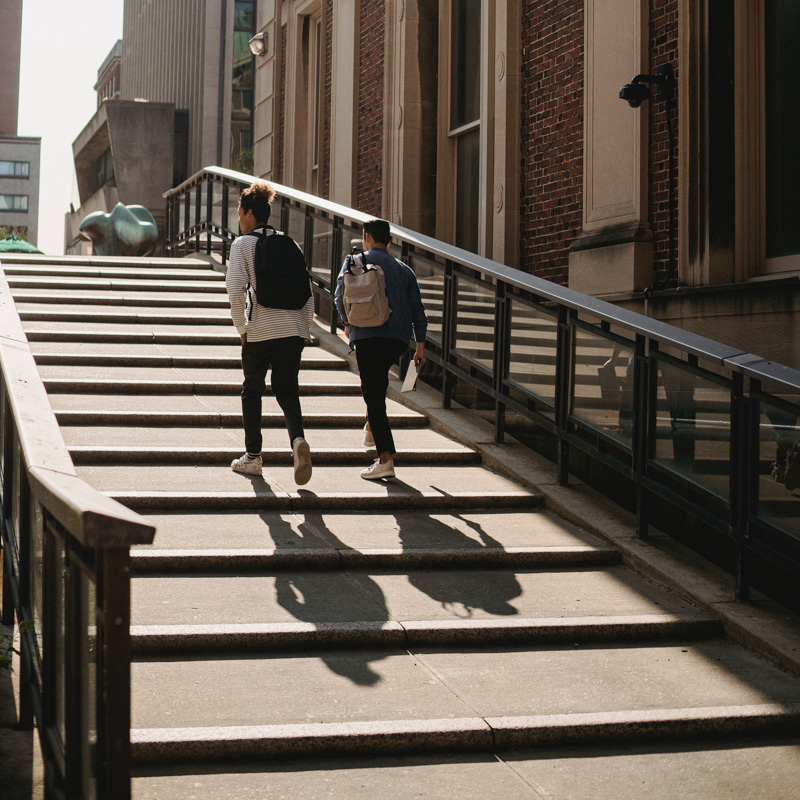
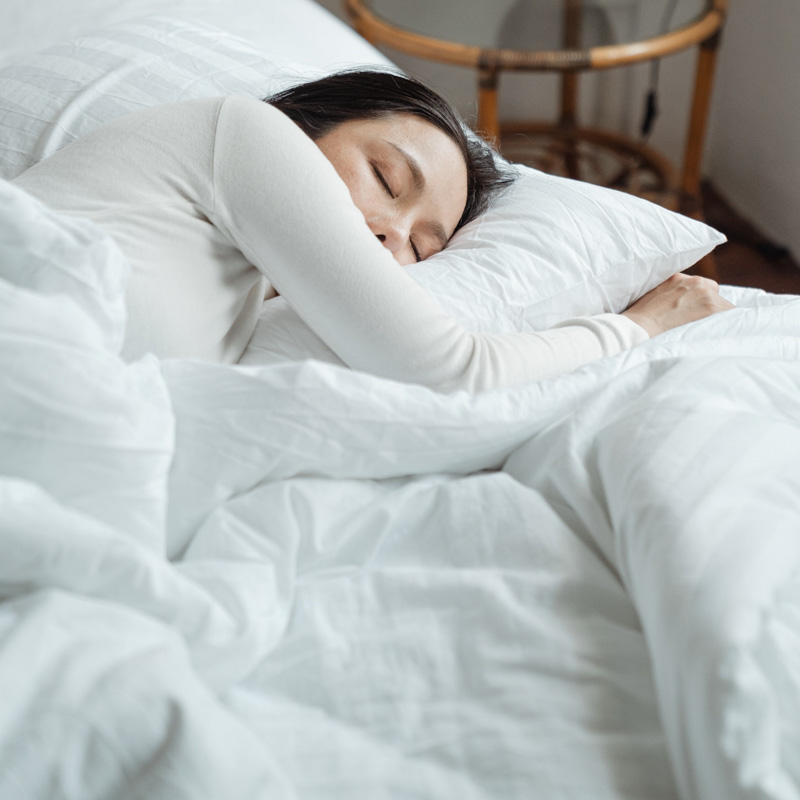
What is a chronotype?
People differ in their preferred timing of sleep and wake, which is a physiological behaviour known as chronotypes.² Certain genes have been linked to morning-evening preference and genes that generate and regulate sleep and circadian rhythms are important for understanding the individual variances in sleeping behavior.

Night owls
Night owls have a circadian rhythm period above the average. They tend to be more energetic in the evenings and can easily stay up later than average. They also have more difficulties waking up in the morning. Night owls would benefit from a light exposure that helps them wake up early in the morning to match their spontaneous wake up time with their work schedule. They would then also feel sleepy earlier in the evenings.

Morning larks
Morning larks have a shorter circadian rhythm period. They easily wake up early in the morning – which may lead to insufficient sleep if they need to stay up late at night. The right light exposure would help these individuals keep their alertness level a little longer in the evening and get more quality sleep, up until the time they should wake up.
The right light at the right time.
Getting the right type of light for the right time of day can be complex. Eating habits, when, how and if we choose to exercise, travel schedules and work commitments all affect the bodily rhythms. These parameters are individual. People differ and so do their needs. With appropriately timed light and quality of light, we can help ensure we perform when we need to perform and sleep when we need to sleep. Light recipes can be used to give you a boost or help you relax.
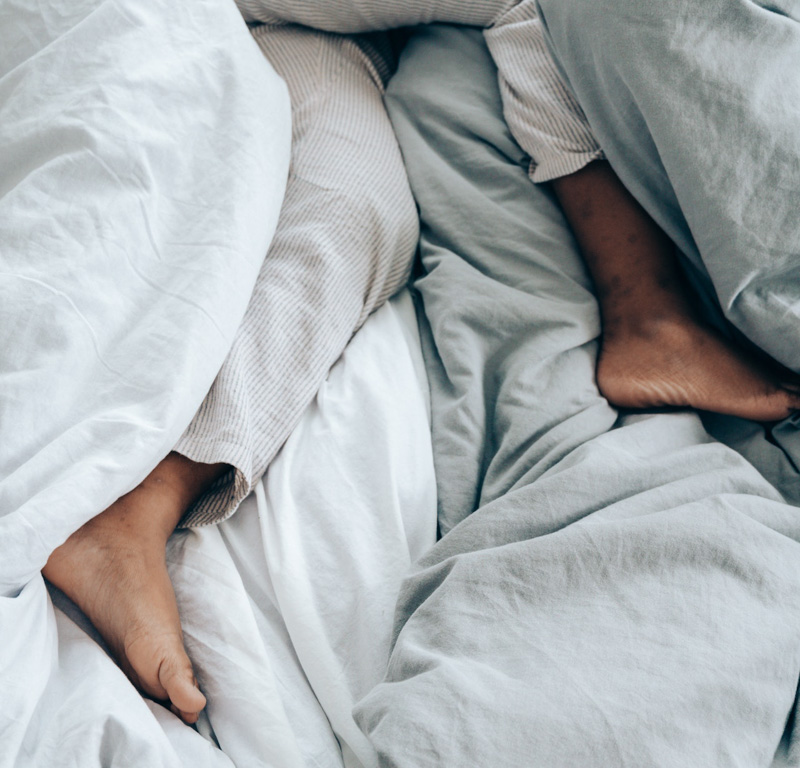
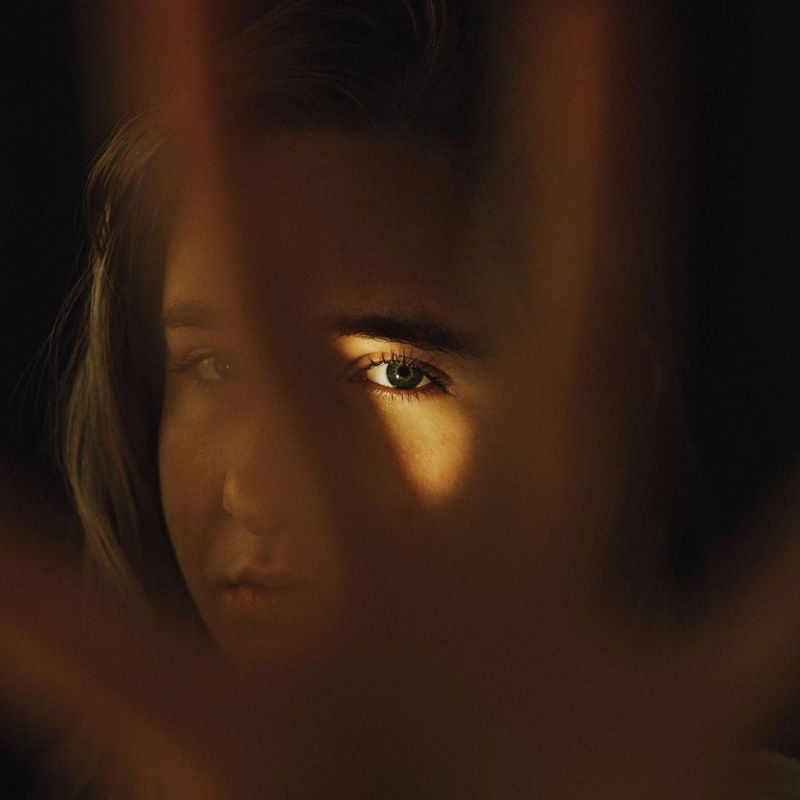
Light is the most important time cue for the circadian rhythm.
Light is the most important time cue for the circadian rhythm³ as it stimulates light sensitive cells (called ipRGCs) in the eye that projects directly to the SCN. The SCN in the hypothalamus is the master clock in the human brain, where light information is used to synchronize the circadian rhythm with our surroundings.
It all starts in the eye.
Eye formation begins 22 days into embryonic development, and the eye continues to develop even after birth. In the back of the eye we have the retina which consists of several layers. Outermost are the photoreceptors. Up until around 2000 only two types of photoreceptors were known, rods and cones. A third photoreceptor sensitive to a subportion of visible light, separated from that of rods and cones, was recently discovered.
Furthermore, this receptor was found in the ganglion cell layer and not in the photoreceptor layer of the retina. It contains melanopsin, a photopigment different from that of rods and cones with a response curve peak around 480 nm. The ganglion cells in the retina form the optic nerve that transport light information to the brain from the eye. Most of the nerve fibres projects to the visual cortex in the back of the brain.
A portion of the nerve fibers coming from the melanopsin-containing ganglion cells project directly on to the hypothalamus and the suprachiasmatic nucleus where light information is used to synchronize the circadian rhythm with our surroundings⁴,⁵,⁶.

Pathways for light.
There are two pathways for light signals inside our brain, a visual and a non-visual path. These pathways are sensitive to different properties of light. Our circadian rhythm uses light signals from the non-visual path to synchronize the body with the solar day. This is vital to help our body function. Biocentric lighting is not only good visual light but primarily designed to meet the needs of the non-visual pathways.
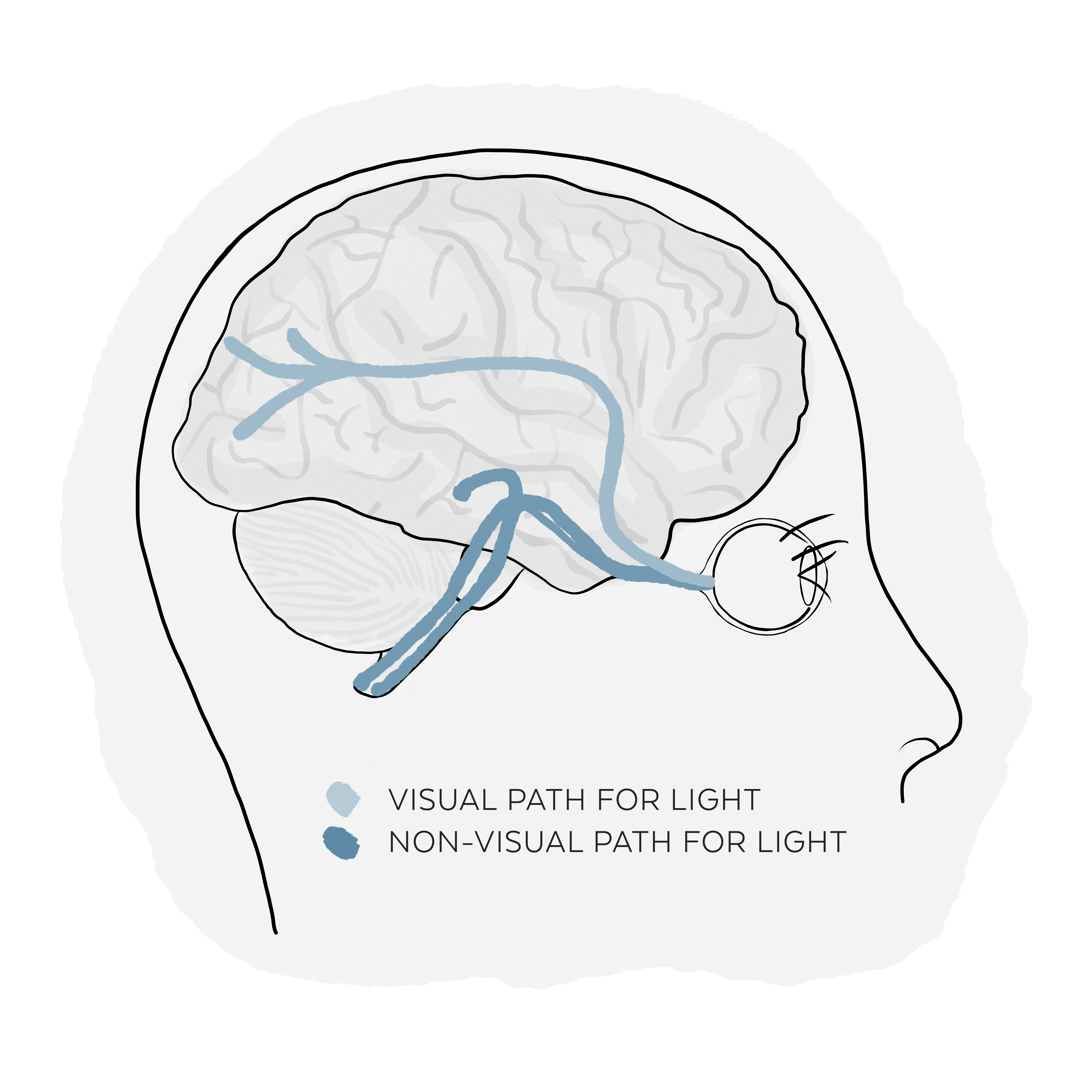

Most of us don't get enough light.
Most of us don’t get enough light to synchronize with the solar day. We also sleep too little. Chronic sleep and circadian rhythm disruption is associated with short- and long-term health effects, including immune suppression and increased risk of infection and cancer⁷,⁸.
Restoring the natural day.
The human sleep/wake cycle has evolved according to the solar day. Due to our modern lifestyle, we seldom wake up and go to sleep in accordance with sunrise and sunset. Factors such as varying work schedules, increase in screen time and travel habits have led to many varieties for sleep- and wake time amongst the population. Whilst small differences are natural, humans feel and perform at our best when we are as closely aligned with the natural rhythm of the day as possible. The illustration shows the variation in sleep time for different light environments.
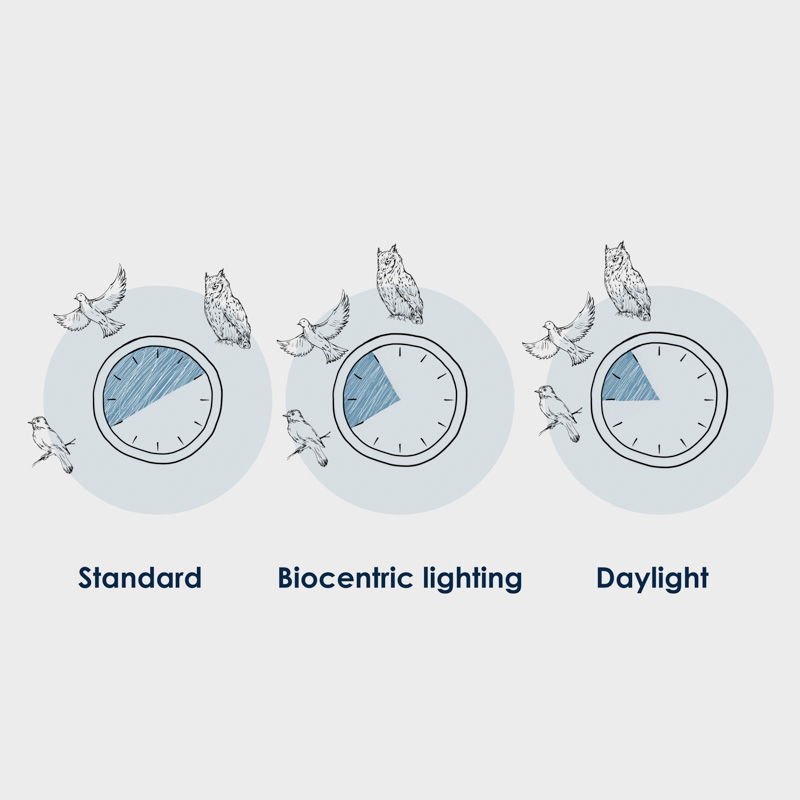

Biocentric lighting is designed to reclaim your natural rhythm and help it sync with the day.
We consider the needs of every individual as well as the population as a whole.
In a standard office, the difference in preferred sleep and wake time may vary as much as six hours. In an office with BCL m500, we can reduce these differences in wake-up times by 50%, to a three-hour window. This means that evening owls and morning people can be efficient when they need to be, at the same time.
Thrive together
Biocentric lighting can help promote team productivity and efficiency in the office, by considering the needs of different individuals.
Peak performance aligned.
In sports, Biocentric lighting helps to unify when during the day a team’s peak physical performance is reached, so that all individuals can excel together.
A robust and regular sleep schedule.
Having a regular sleep schedule is important to maintain a balanced circadian rhythm. Biocentric lighting enables a robust and regular sleep schedule, regardless of chronotype.
Summary
- Light is vital to help our body function and affects our sleep cycles
- Light is the most important synchronizer for the circadian rhythm
- With the right light exposure, we can help restore and sustain our circadian rhythm
References
- Reiter RJ, Rosales-Corral S, Sharma R. Circadian disruption, melatonin rhythm perturbations and their contributions to chaotic physiology. Adv Med Sci. 2020 Sep;65(2):394-402.
- Elise Facer-Childs (2018) https://theconversation.com/morning-lark-or-night-owl-how-our-body-clocks-affect-our-mental-and-physical-performance-106486, accessed on 2022-01-20
- Czeisler, C. A. et al.Stability , Precision , and Near-24-Hour Period of the Human Circadian Pacemaker Published by: American Association for the Advancement of Science Stable URL: http://www.jstor.org/stable/2898429 Linked references are available on JSTOR for this article. Science (80-. ).284, 2177–2181 (1999).
- Sleep Foundation (2022) https://www.sleepfoundation.org/circadian-rhythm/can-you-change-your-circadian-rhythm, accessed 2022-01-27
- Foster RG. 2020 Sleep, circadian rhythms and health. Interface Focus
- Evans, J. A. & Davidson, A. J. Health consequences of circadian disruption in humans and animal models. Progress in Molecular Biology and Translational Science vol. 119 (2013)
- Chaix A, Zarrinpar A, Panda S. The circadian coordination of cell biology. J Cell Biol. 2016 Oct 10;215(1):15-25.
- Addison K and Harris J (2019) How Do Our Cells Tell Time?. Front. Young Minds. 7:5. doi: 10.3389/frym.2019.00005

